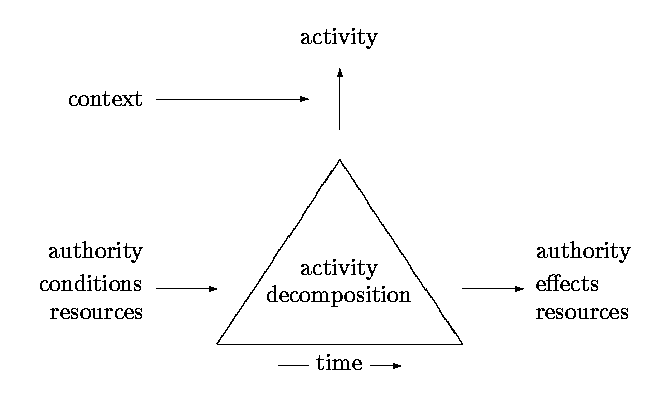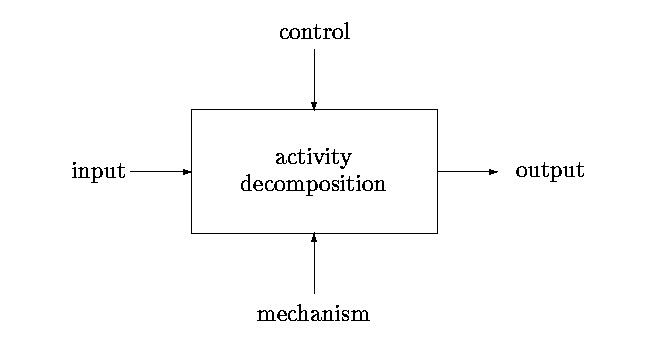
The O-Plan2 team at Edinburgh are working to simplify some of these notions from AI planning and to relate them better to existing systems engineering requirements capture and modelling languages and methods (like IDEF, CORE, HOOD, etc).

Figure 1: O-Plan2 Triangle model of Activity
This work is reflected in our "triangle'' model of an activity (see figure ). The vertical dimension reflects action decomposition, the horizontal dimension reflects time. Inputs and outputs are split into three principal categories (authority, teleology and resources). Arbitrarily complex modelling is possible in all dimensions. "Types'' are used to further differentiate the inputs and outputs, and their semantics.
"Entry'' to the model can be from any of the three points in the triangle model: from the top vertex to ask for activity expansions or decompositions, from the right to ask for activities satisfying or providing the output requirement (authority, goal or resource). These two sides are used mostly by AI planners to date. The third side from the left can reflect non-intended triggering conditions for an action and will be needed when improved independent processes are modelled.
The "intentions'' or "rationale'' behind the use of a particular activity can be related to the features of this triangle model. Normally causality or teleology via the pre-conditions/post-conditions has been used in AI planners for many years to record the plan rationale. In the richer model now in use in O-Plan2, rationale in terms of resource usage and supply or authority provision may also be stated. This makes it possible to use a uniform approach to the modelling of authority, product flow and resource requirements.
Note that there is a deliberate and direct mapping between the O-Plan2 triangle model of activity and the existing IDEF methodology (see figure ). IDEF-0 is compared here since it has been used for modelling processes (IDEF-3 is a later more comprehensive IDEF method specifically targeted at the modelling of processes.).

Figure 2: IDEF-0 model
IDEF modellers usually use "control'' for authority related triggers and "mechanism'' to reflect resource availability. A criticism of IDEF is the lack of direct support for modelling the different types of output and their intended destination. Experienced IDEF modellers use the arc labels, naming conventions and the "notes'' system in an IDEF support "kit'' to encode this information. The O-Plan2 triangle model more directly supports this and will allow for improved support tools.